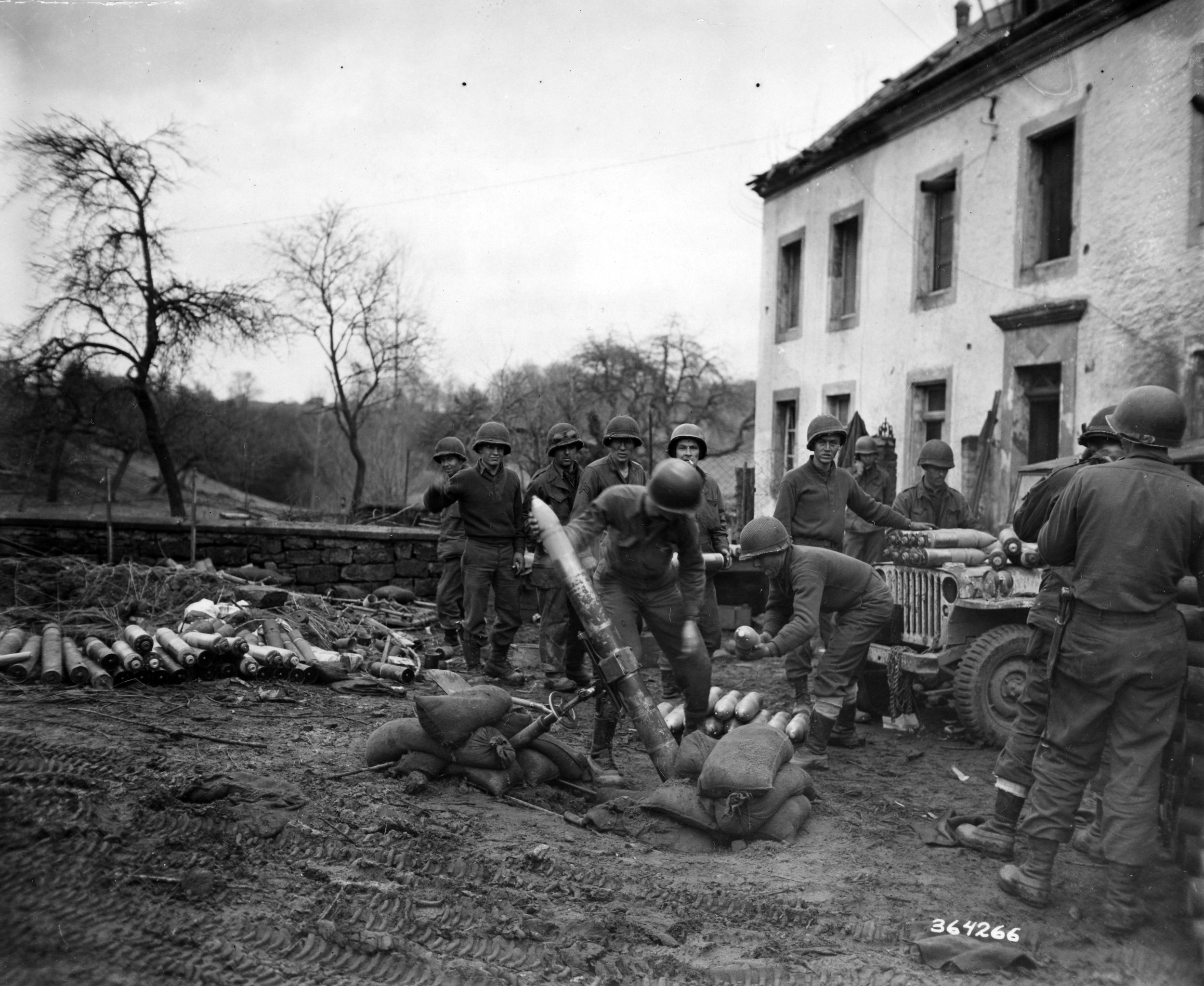
Attached Chemical Units
While the 103rd Infantry Division did have mortar teams embedded into their ranks, there were certain fire missions that required more than the normal 60mm High Explosive (HE) mortar rounds that an Infantry company typically carried. To provide additional or specialized fire power, chemical mortar battalions were routinely attached to the 103rd and other infantry divisions throughout the war. The chemical units attached to the 103rd Infantry Division in Europe were the 3rd, 81st, and 83rd Chemical Mortar Battalions.
These chemical mortar battalions were equipped not only with 60mm and 81mm mortars, but also 4.2 inch mortars to provide heavy fire support to the units they were attached to. Along with the varying sizes of the mortars, the chemical mortar battalions also could fire an array of different mortar rounds to better support the ground forces. Along with the HE mortar rounds, the chemical mortar battalions could fire white phosphorus and smoke rounds when requested.
The white phosphorus rounds were effective weapons both physically and psychologically because of the damage that white-hot phosphorus could inflict a round hit a structure or around people. These rounds are designed to explode when they hit a target, spraying extremely hot phosphorus that burns at over 4000ºF. White phosphorus would set most structures, especially wooden buildings on fire. If a person was struck with pieces of white phosphorus, the effects were particularly devastating as the phosphorus would inflict horrific burns.
The smoke rounds that the chemical mortar battalions fired served an entirely different purpose. These rounds were fired to shield or hide an advance or retreat of friendly forces from the enemy’s view. While these rounds were important for the safety of American servicemen, they were not always effective because they were dependent on the weather and particularly the wind. If there was high wind or if the wind was blowing in a certain direction, the smokescreen would quickly dissipate, leaving the troops exposed.
Photo Credit: Statt, SC 364266- Company B, 91st Chemical Mortar Battalion operate a 4.2 mortar which is throwing smoke shells to cover the crossing of the 5th Division troops over the Sauer River Near Bollensdorf, Germany. February 8, 1945. U.S. Army Signal Corps Archive via Flickr.